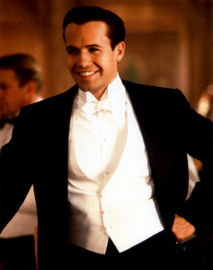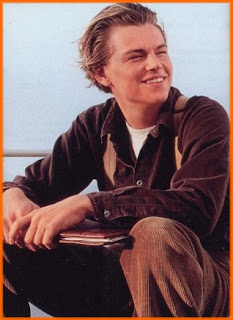By using equipment such as the Sony HDV1000 and Final cut express, we were able to follow conventions of continuity within our film when shooting and editing. We filmed over a period of around two weeks and in oder to keep continuty we had to refer to previous footage to ensure that the chracters were wearing the same clothes, accesories and had the same hairstyle. Furthermore, we had to make sure that the scenery was the same in each shot. Here, we mistakingly broke continuty as there is a cupboard door which is open in one shot and closed in another. We noticed this in post-production and we were unable to re-film this scene due to the fact that we had asked friends to star in the film and they were not available at appropriate times.

The 180 degree rule was one of the most important rules that we followed whilst shooting so the audience would be able to understand the positioning of the characters throughout the film. In some cases, breaking the 180 degree rule can be effective in the horror and thriller genres as it can confuse the audience, making them scared or uncomfortable- in this instance, it would be acceptable to make the audience confused as it creates suspension. However, this would not have been effective in our genre of film.


We also followed the rules of continuity during the editing process when showing a passage of time:
We have used a cross dissolve to display to the audience that we are cutting to a flashback or leaving the flashback.
We also used a fade to black to show a passage of time, to later that week. We used a fade to black rather than the cross dissolve so that it wouldn't confuse the audience into thinking that it was another flashback and that the story was going forwards, rather than backwards.
Towards the end of the film, we used a fairly common technique when editing narratives which don't follow a linear format or that display a longer period of time. We used text to display that a week had passed by since the previous shot, in order to represent a longer passage of time. We believe that by using this technique it will stop the audience from getting confused with the time differences used in the film.
We attained this idea from the film 'Love Actually':
Not only did we have continuity with the picture of the film, but we also used Final Cut Express to ensure continuity in sound. We used audio transitions on the split screen shot where we carried the sound of James' voice onto the split screen shot of Sally and James. James' dialogue needed to match his mouth movements to make the audience believe that they were actually having a phone conversation rather than it being two separate conversations.
Furthermore, we used sound bridges to add diegetic and non-diegetic music to the film to make the film seem more realistic and make the audience feel the intended emotions. When adding music to our film I had to adjust the volume so it was appropriate for that scene. For example, in the party scene I had diegetic music to suggest to the audience that the characters were at a party and while Sally and George were having a conversation I had to make the music quieter and I used the effect 'lowpass filter' to make the music sound like it was in another room. Once they had finished the conversation I adjusted the volume of the music so that it was louder as Sally was walking upstairs. I believe that this was a very effective technique to use and it displays how I have used and developed my editing skills within our film.
Our non-linear narrative challenges continuity as we use flashbacks of a party to tell the story instead of showing the party first (in a chronological order) however as a group we decided that this would make our film stand out from others as we can convey our story in an unusual way.
Moreover, we break the 180 degree rule by using a handheld, low angled shot of Sally walking to suggest that she is drunk. It breaks the rule because the camera moves to different sides of Sally, although we broke the 180 degree rule, it still makes sense to the audience and adds to the effect that she is drunk.
We believe that our film personifies the paradigm of drama as it involves real issues such as alcohol abuse, pregnancy and relationship breakdown. For example, Sally tells Lizzy, her best friend, that she is pregnant and that it isn't her boy friends baby but at the end of the film Sally tells James (her boyfriend) that it is his. The story builds tension because the audience want to know whether she will tell James that the baby isn't his and therefore, this follows the typical conventions of drama.
Moreover, our film incorporates the theme of 'good vs evil' further personifying the drama genre. For example, Sally is the evil character in our film and Lizzy is the good character, Sally cheats on her boyfriend, therefore displaying that Sally is the villain and Lizzy tries to convice her to tell James (her boyfriend) the truth, therefore demonstrating that she is the good character.
This theme is displayed in the majority of films as it creates tension within the audience as they will want the good character to beat the evil one and so they become interested in the film as they want to see if good beats evil. For example, in Titanic, Jack is the good character and Cal portrays the evil character.
GOOD BAD


Within our film I believe that we have achieved audience pleasure through entertainment purposes, according to Richard Dyers's theory of entertainment and utopia. His theory states that a film provides an audience with something they are lacking and that a film can provide an audience with a utopian solution. For example, if an audience is tired, it can provide them with energy, if they are bored it can provide them with intensity, if they are poor it can provide them with abundance, they lack understanding it can provide them with transparency and if they are lonely it can provide them with community. We use his tired concept in our film as we have a party scene with energetic, upbeat music and fast editing:
By using this utopian solution our film may cure the potential tiredness of our audience as the fast-paced editing gives the film energy which will transfer to the audience.
In addition, we use Dyer's intensity solution to cure boredom. This is present in our film as the audience will feel the highs and lows of the characters, for example, James see's that Sally has cheated on him, which is an extreme low for his character and we experience a high at the party when Sally is drinking alcohol. Our film would cure the boredom of our audience as they experience the highs and lows for various characters our film, keeping them interested in the film.

When considering Dyer's intensity solution we decided that our main character, Sally would be the one who creates intensity and tension. When designing Sally's character we took insparation from the film 500 Days of Summer. The main female character, Summer doesn't believe in true love and enters a relationship knowing that she won't commit to it. We used her belief of relationships to influence our story as each time Sally drinks the vodka, her veiws of the relationship change and she no longer wants to be in one. Hence the reason why she cheats on her boyfriend, James with George.
We also used Dyer's theory as a solution for loneliness as the party scene creates a community and the audience will feel like they are a part of the film.
In these two shots you can see that there are a few people at the party. Even though we didn't have many people at the party, the diegetic music that you can hear implies that there are many people there. Previous scenes where Sally is drinking and the shot of her drinking with a friend may also cure the audience's feeling of loneliness as it signifies friends and community.


Finally, we use Dyer's transparency solution to help the audience understand the characters feelings and emotions. We do this by using non-diegetic music, for example, in the final scene Sally tells her boyfriend, James that she is pregnant and we use sad music to project the emotions the characters are feeling to the audience. When looking for music to fit with the scene we looked for music that was soft and slow and this hopefully potrays the effect we were aiming to give.















No comments:
Post a Comment